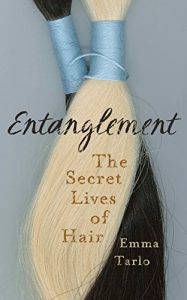When it’s not attached to your head, your very own hair takes on a disconcerting quality. Suddenly, it is strange. And yet hair finds its way into all manner of unexpected places, far from our heads, including cosmetics, clothes, ropes, personal and public collections, and even food. Whether treated as waste or as gift, relic, sacred offering or commodity in a billion-dollar industry for wigs and hair extensions, hair has many stories to tell.
Collected from Hindu temples and Buddhist nunneries and salvaged by the strand from waste heaps and the combs of long-haired women, hair flows into the industry from many sources. Entering this strange world, Emma Tarlo travels the globe, tracking its movement across India, Myanmar, China, Africa, the United States, Britain and Europe, where she meets people whose livelihoods depend on hair. Viewed from inside Chinese wig factories, Hindu temples and the villages of Myanmar, or from Afro hair fairs, Jewish wig parlours, fashion salons and hair loss clinics in Britain and the United States, hair is oddly revealing of the lives of all it touches.
Collected from Hindu temples and Buddhist nunneries and salvaged by the strand from waste heaps and the combs of long-haired women, hair flows into the industry from many sources. Entering this strange world, Emma Tarlo travels the globe, tracking its movement across India, Myanmar, China, Africa, the United States, Britain and Europe, where she meets people whose livelihoods depend on hair. Viewed from inside Chinese wig factories, Hindu temples and the villages of Myanmar, or from Afro hair fairs, Jewish wig parlours, fashion salons and hair loss clinics in Britain and the United States, hair is oddly revealing of the lives of all it touches.



